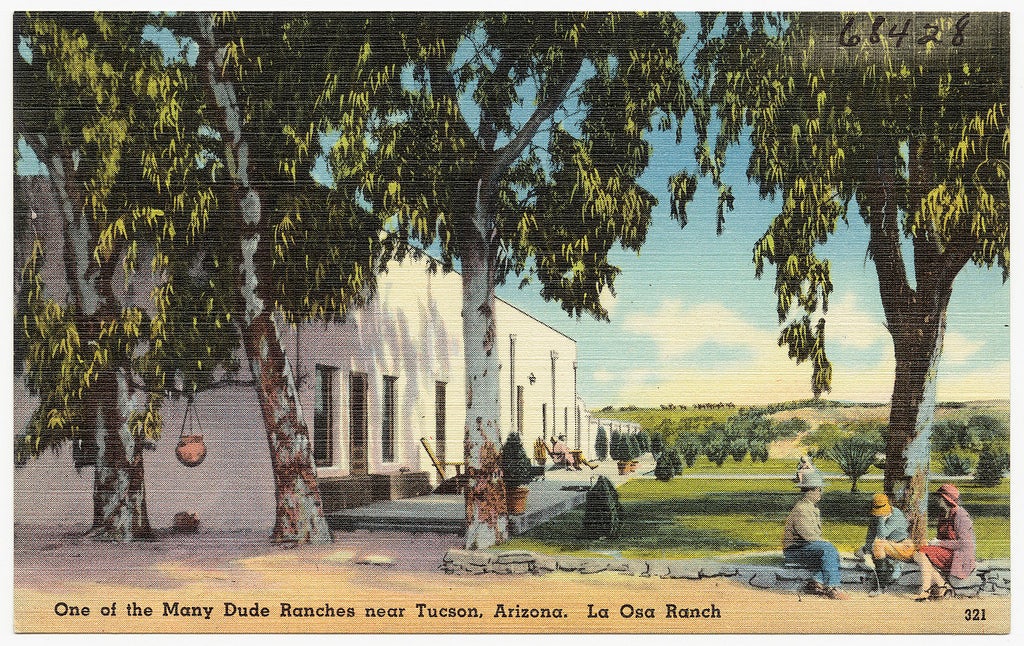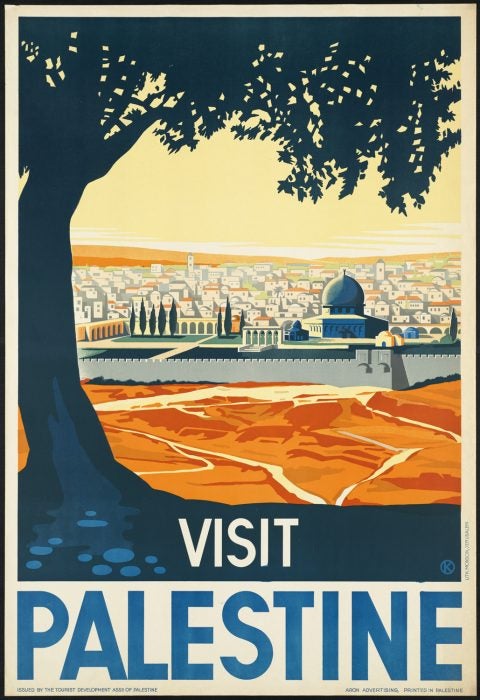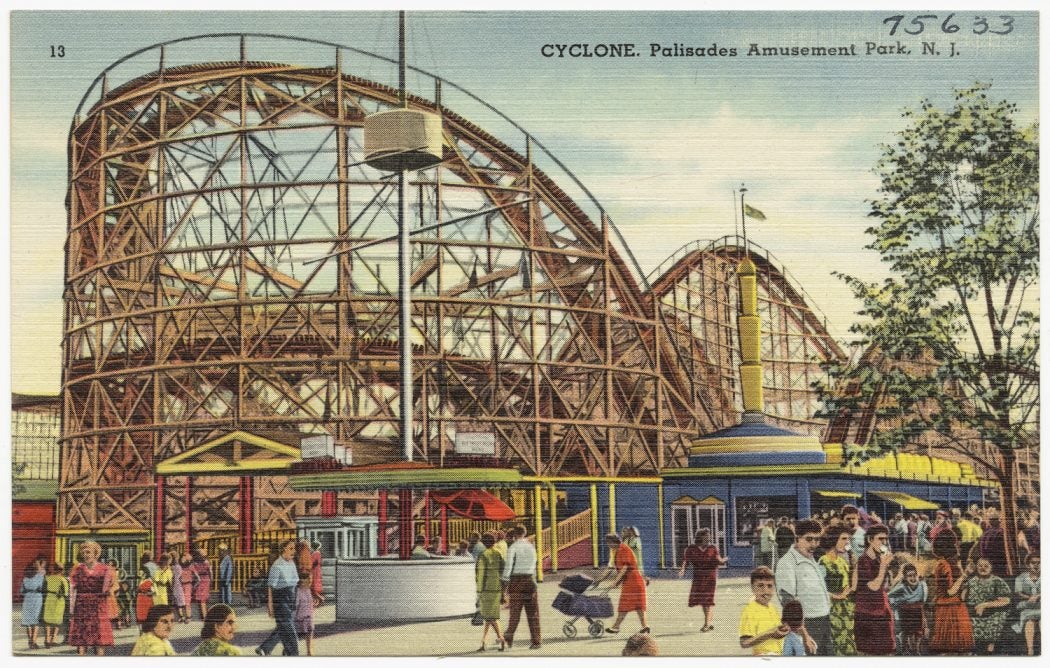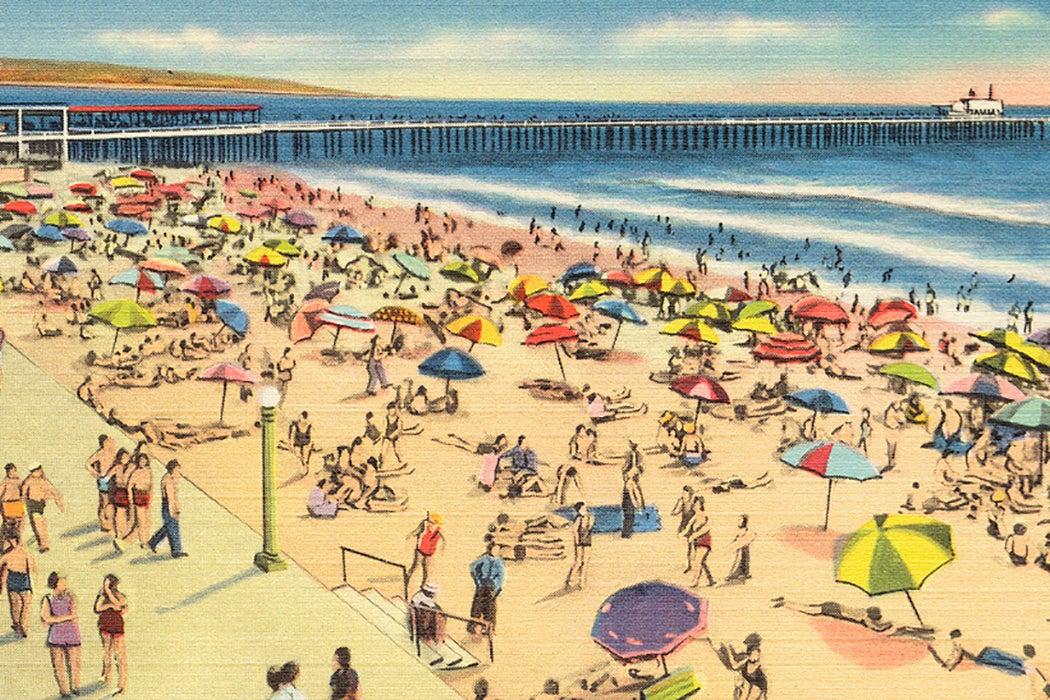It’s that time of year: The mercury rises, pulses quicken, and the days get longer. The noisome odors of sunscreen, lighter fluid, and bug spray blend into a symphony of smells, smells that bring with them the feeling of freedom and the distinct sense that life has shifted into a lower gear. Vacation’s just around the corner, and those with the leisure time and money can choose from any number of trips to go on. Not surprisingly, a commonplace of tourist marketing is that the kind of vacation you go on says a lot about who you are.
Scholarship on tourism and vacation suggests that there are actually five distinct kinds of vacations that people these days tend to take:
- The Paradise
- The Wild
- The Ruin
- The Living Culture
- The Playground
If a list of types makes vacations sound about as prepackaged and mass produced as airplane food, it’s because they are. Scholars who study tourism have found that there’s actually a surprisingly narrow range of ways that people can go on holiday.
The Paradise
The beaches of Club Med and Sandals resorts are examples of destinations for the classic paradise vacation, but the presence of a beach isn’t necessarily a requirement. Rather, the paradise is epitomized by the combination of lush beauty with extras like wi-fi, spa treatments, and a well-stocked bar. Ironically, the very presence of these conveniences can threaten the natural beauty that draws people to these kinds of destinations. The growing presence of industry can overwhelm the delicate balance of nature and civilization that’s at the heart of the paradise vacation idea.
In the case of something like spring break, there can be an ugly tipping point, as the historian James Schlitz suggests in the Florida Historical Quarterly. The earliest origins of spring break lie in the middle of the Great Depression, before college campuses began in earnest to build heated indoor swimming pools. Schlitz writes that coaches at northern colleges began bringing their swimmers down south during the spring holidays to get a jump on training. Even before the GI Bill swelled the ranks of collegians, swim meets taking place in Fort Lauderdale during the break drew increasing numbers of coeds to the beach. This proved to be the kernel of a tourist industry that would bring both prosperity and ruin to the area.

As early as the1950s, Schlitz tells us, spring break in Fort Lauderdale had already gotten a reputation for its loose moral atmosphere. Civic leaders who sponsored a wholesome singles dance found it sparsely attended, while most early spring breakers sought an unsupervised environment. The next thirty years saw the town’s more respectable Mom and Pop businesses replaced by t-shirt shops, shabby motels, and beach bars that burned through as many as 100 kegs a day. One police chief described the scene as “heaps of garbage in a tropical setting.”
The early 1980s were the straw that broke the camel’s back. After the 1985 season, Fort Lauderdale’s spring break scene was abruptly brought to a halt through a mix of code enforcement, cement barriers, and ominous PR. Schlitz cites Chamber of Commerce figures to show that, within five years, both spring break visitors and revenue had dropped to just 10% of their 1985 peak, much to the relief of Fort Lauderdale’s remaining full-time residents. Miraculously, civic pressures had successfully turned on the bright lights of closing time. But as we can see every March, there have been countless other beach towns ready to accept the torch that the original home of spring break was only too eager to pass on.
The Wild
While the paradise vacation combines escapism with luxury and convenience, some travelers prefer to take their natural beauty with a side order of roughing it. U.S. culture invests the wilderness with overlapping and sometimes conflicting meanings. The most enduring of these is the belief that frontier exploration is the antidote to an excessive feminization caused by the softening comforts of the modern home. As the historian Adrienne Rose Johnson writes in “Romancing the Dude Ranch, 1926-47,” neither vacationers nor their rustic guides were safe from the refining influence of domesticity.
With the official closure of the frontier in 1890, urban Americans began filling their increasing amounts of leisure time by seeking adventure in the rugged outdoors. In response to this demand, dude ranches of the late nineteenth and early twentieth centuries staged a nostalgic version of the cattle-rustling frontier family, soothing tensions created by the linked phenomena of industrialization and women’s liberation. While Eastern tourists embraced the rugged lifestyle of the wrangler, wranglers on dude ranches also feared that the shift from a production economy to a tourist economy was robbing them of their toughness. Even more alarming was the threat of attractive female tourists, who often frequented such places with a view not to wrangling cattle, but to wrangling a husband.

The “demand” for handsome young wranglers led to ranchers recruiting sham wranglers from the ranks of collegiate men. And in Nevada, women going through quickie divorces began to frequent “divorce ranches,” finding comfort in either the wisdom of a frontier woman confidante or the arms of a wrangler. In particular, Johnson’s article highlights the ballads, postcards, and promotional brochures coming out of ranch tourism that depict a scene entirely unlike anything we might have expected. Whereas the tourist ranch had begun as a place to reconnect with a primal toughness, it ended up resembling a folksy spa that allowed visitors to play dress up and forget about the present by fantasizing about an idealized national past.
The Ruin
Not surprisingly, fantasizing about the past is a primary driver for vacationers who set their sights on visiting ruins. For the comparative literary scholar Andreas Huyssen, the twin forces of erasure and nostalgia animate the ruin-centered vacation. People are drawn by an attraction to the past, he contends, an attraction made even more emotionally magnetic by the remaining traces of structures, their inhabitants, and the civilizations that supported them. Yet this attraction is still rooted in the traveler’s experience of the present.
The practice of visiting contested sacred spaces such as Jerusalem comes with even more poignant and tense connections between an imagined past and a material present, as the anthropologist Jackie Feldman notes in a 2007 issue of American Ethnologist. An Israeli tour guide, Feldman notes the actual and imagined boundaries between Judeo-Christians, on one hand, and Muslims and Palestinians, on the other, created by her own professional practice.

Pairing Bible passages with the act of visiting the physical places to which those passages correspond, the state-trained Israeli tour guide serves as a native facilitator for a distinctive population of religious tourists: Western, relatively affluent, and Protestant. Feldman details the interpreter’s work of weaving a coherent experience for the religious tourist that provides continuity between a foreign landscape and the Bible. She argues that tour guides pairing a Zionist present with a Biblical past bypass a Byzantine and Palestinian history to reassert a specifically Jewish narrative claim to the Holy Land. Though some guides might not acknowledge it, visitors to the ruin nevertheless bump up against a present that is easily as alive with tension and conflict as the Biblical Jerusalem.
The Living Culture
In a contrast to the layered, fragmenting space of the ruin, a concern with the living animates those who seek to experience other human cultures. Such vacations are a staple of TV travel shows, and hosts such as Samantha Brown actively encourage consumers to immerse themselves in cultures other than their own. We can attribute a host of clichés to this type of vacation. The American tourist returning from India with a new, enlightened sense of spirituality is as commonplace as the Japanese tourist bearing albums full of photos taken in European capital cities.

Sex tourism is a thriving subset of the living culture vacation. It’s an industry that flourishes in locales as far-flung as Bangkok, Amsterdam, and Nevada. In “A Suitcase Full of Vaseline or Travels in the 1970s Gay World,” the gender scholar Lucas Hilderbrand examines content from a 1970s gay lifestyle magazine called Queen’s Quarterly that gleefully imagines the sexual tourist having to “explain hairspray to [a] Zulu lover” while promising advice on “cruising Moscow.” In contrast to the exuberance of a prospective global sexual smorgasbord (and the power differentials implicit in such jet-setting) an ominous note resonates. Queen’s Quarterly also advises “where not to go—like Lake George, Paducah, Pocatello…”
Want more stories like this one?
Hilderbrand sees the appearance of this kind of travel writing as expressive of a gay lifestyle and identity expressed in the explosion of gay periodicals during the late 1960s and the 1970s. Much like evangelical Protestant trips to the Holy Land, the gay lifestyle magazines of this period also engage in identity construction despite the immanence of major cultural fault lines. Both types of vacations also engage in the search for an authentic, sometimes elusive essential quality.
The Playground
Playgrounds present the vacationer with highly structured locations and experiences, including themed food, handicrafts, performance, and spectacles. Theme parks such as Six Flags, Universal Studios, and the Disney parks cater to a family-friendly audience while others, such as Las Vegas casinos, court a more adult clientele. Still other places such as Branson, Missouri, Graceland, and cruise ships peddle their own distinctive brands of diversion within a highly concentrated and strictly delineated space. The playground promises a bracing shot of fun in exchange for the funds necessary to sustain its operations (plus a profit).

Where the living culture promises authenticity, the playground delivers just the opposite: simulation. The Folk Cultural Villages in Shenzhen, China (just outside Hong Kong), for instance, bring together more than 30 of China’s 56 ethnic minority cultures into a single 21,000-square-meter theme park, complete with residences, bridges, temples, gardens, markets, and water features. The villages are staffed by more than 7,000 “performers,” who are young adults imported from rural, undeveloped regions to the park’s location in the industrialized region of Guangzhou. Representing their home cultures, these employees are often encountering industrial culture for the first time in their lives, and it’s not uncommon for some to run away after undergoing the park’s 294-hour training program.
Weekly Digest
To smooth workers’ adjustment to industrial culture, the park employs a den mother to minister to the homesick as well as to enforce a ban on intercultural relationships, which threaten the fragile boundaries between different cultures on display in the park. The main aim of the villages is to represent the cultural practices, beliefs, and folkways that exist under the larger umbrella of the Han majority, thus maintaining a picture of benevolent nationalist pluralism in the concentrated space of a theme park. The multicultural fantasy staged within the walls of this massive simulated environment, then, is ultimately tied to a very real set of political objectives.
Where Do We Go from Here?
Our imaginations seem boundless when it comes to having fun during time off. The definition of vacation itself has experienced such significant drift that we can now go on community service and plastic surgery vacations. But as transformative as these new kinds of boutique trips can be, the business of vacationing also transforms communities in ways that can both benefit and harm locals. Fragile ecosystems, strategically located residential neighborhoods, and taxpayer-funded infrastructure all feel the impact of the stress that tourism puts on a place. Similarly, while tourism can provide a livelihood for many, competition for tourist dollars can result in problematic overdevelopment as well as developments abandoned in medias res—like the vacant seaside condo block whose construction has been halted, never to be finished. The carefree face of vacation masks a set of tensions that threaten to overwhelm the spirit of leisure travel.







